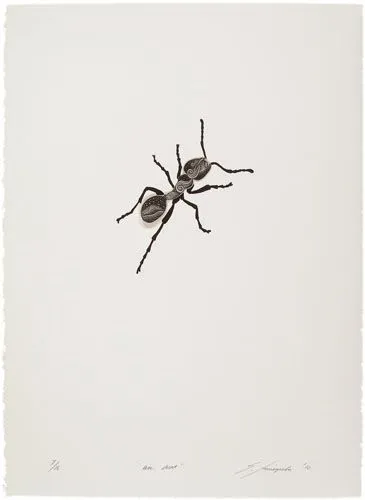【Update 2023-11-15: This is an outdated version of this article. For a more up to date version, please see: https://laspina.org/to-kill-an-ant/ 】
I killed an ant...
then realized
my three kids were watching
—Shuson

Shuson was one of the more famous modern haiku poets. Initially he hated the restrictive format of haiku and preferred the 31-morea[2] tanka. Then he met Shuoshi Mizuhara, a highly acclaimed haiku poet, and fell in love with the small verse. He had a serious illness in the 1960s and once recovered from it, his haiku took on ideas of human life and life in general.
His mentor, Mizuhara, was one of the free style haiku poets of whom I've talked about before. We can see that influence in this haiku, which is 5-8-6 instead of the standard 5-7-5 count.
This may be one of Shuson's most famous verses. It illustrates a tricky situation I'm sure all parents have found themselves in at least once, the moment when we are caught doing something we tell them not to do.
A personal story: I always teach my boys to not kill and be kind to insects and animals. If we find spiders or even cockroaches in the house, I always get my boys to help help me trap them, then we let them go outside. Yet several summers ago when my boys were smaller I was being bothered by mosquitoes at my in-law's house and I impulsively smashed one that was biting my leg. Suddenly I heard a small voice cry: "Papa, why did you kill that bug?! That was a bad thing to do!"
How do you respond to something like that?
